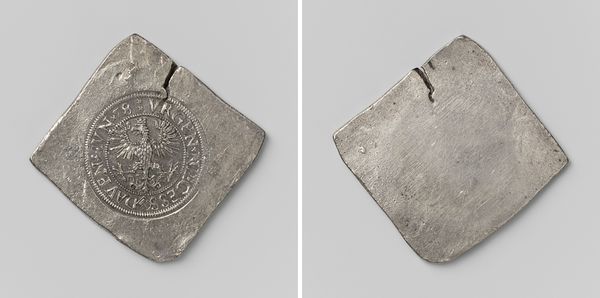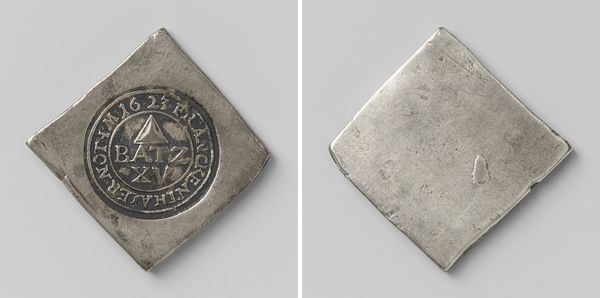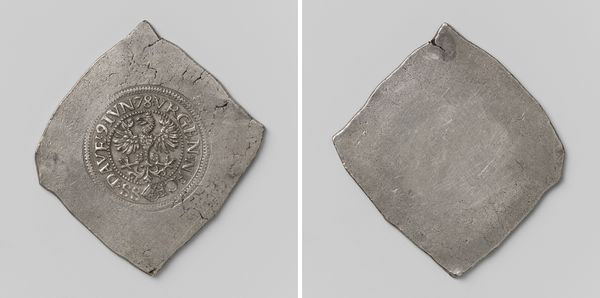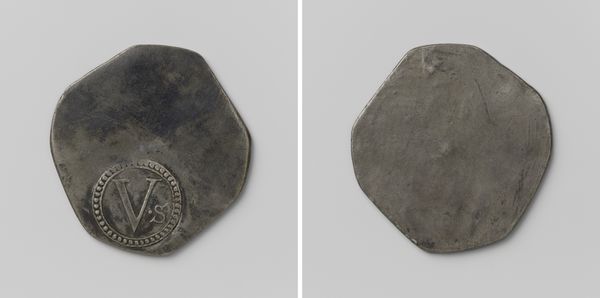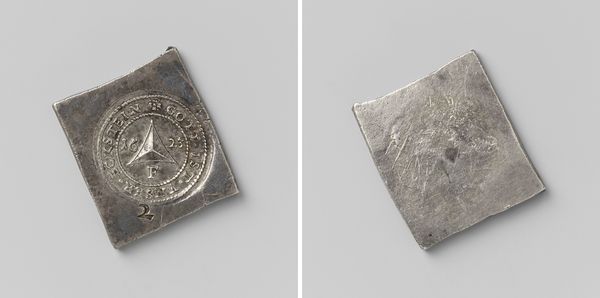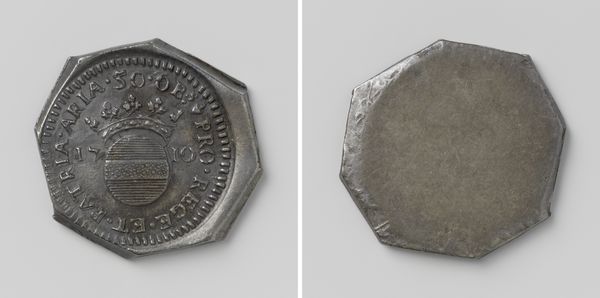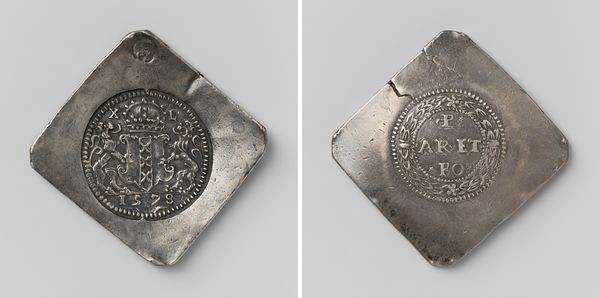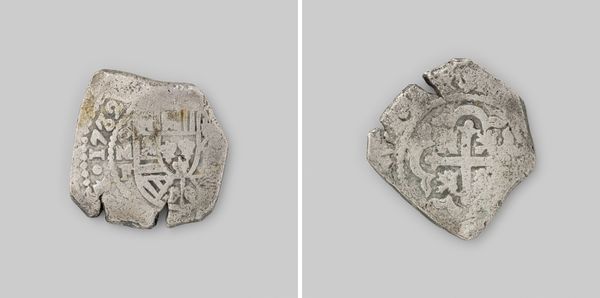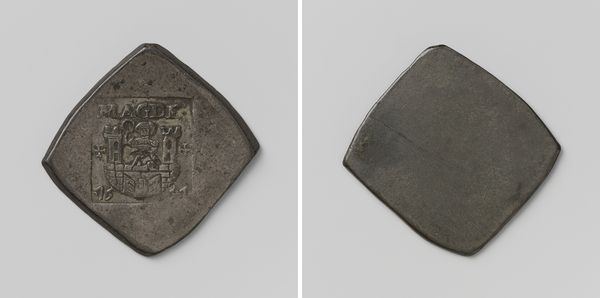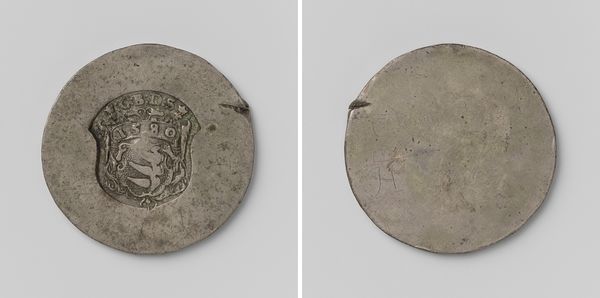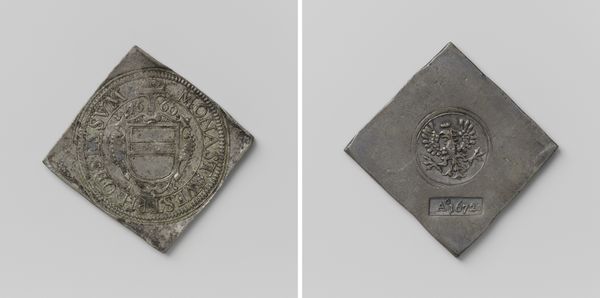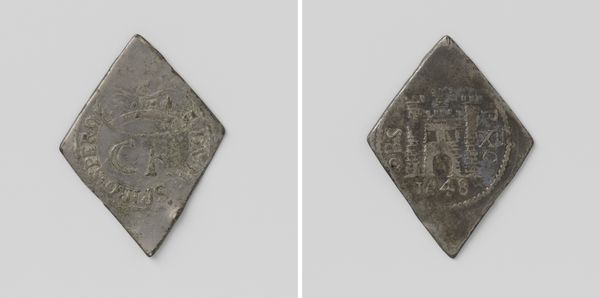
silver, print, metal, relief, sculpture
#
medieval
#
silver
#
dutch-golden-age
# print
#
metal
#
sculpture
#
relief
#
11_renaissance
#
sculpture
Dimensions: height 5.2 cm, width 5.2 cm, weight 33.45 gr
Copyright: Rijks Museum: Open Domain
Curator: The "Twelve emergency coins from Dutch cities," believed to date from around 1577, really do seem to convey a story about crisis and resilience, wouldn't you agree? They're formed from silver. Editor: Immediately, what strikes me is how raw and unrefined they appear, more like hammered metal scraps than meticulously crafted currency. They exude a palpable sense of urgency. Curator: That visual texture is so vital to how we interpret them. The fact they were hastily produced using melted silver tells us much about the economic straits of the time, particularly the siege of Dutch cities during the Eighty Years’ War. Those city emblems were powerful political icons even if resources were scarce. Editor: And that heraldry, even crudely rendered, becomes a defiant assertion of identity, a means of maintaining economic and civic function in the face of disruption. These objects bridge social, political, and economic necessities through readily understood emblems of belonging. Curator: Exactly. Each coin is, essentially, a frozen moment of societal stress, where material worth takes on intense symbolic significance. Imagine those symbols as daily reminders that economic and civic order was at stake, their crude form speaking to more profound cultural disruption. Editor: It seems to illustrate that, in periods of intense struggle, symbolic value becomes far more critical. The silver becomes a carrier of meaning— less a measure of purchasing power, more an assertion of shared cultural experience and group identity. Even with these emergency issues being made fast and ugly! Curator: That visual language helped communities cohere, reminding individuals they weren’t just struggling alone, they were actively participating in the act of survival, which speaks volumes about resilience. Editor: So true. Examining this coinage underscores that, during times of great change or societal pressures, even simple objects can serve as potent reminders of shared heritage and enduring strength. Curator: Indeed. By considering them as cultural artifacts, we can reflect on the human capacity to create meaning from material scarcity and transform adversity into enduring identity. Editor: Precisely! It shifts our perception of money from being merely a transactional tool, towards understanding how deeply interwoven finance is within culture.
Comments
rijksmuseum about 2 years ago
⋮
The cities besieged by the Spanish army for having revolted against Spanish rule in the 1570s experienced severe shortages of virtually everything, including money to pay the soldiers. Emergency money was therefore minted. Gold, silver, paper: anything in the cities under siege could be used as temporary currency.
Join the conversation
Join millions of artists and users on Artera today and experience the ultimate creative platform.
